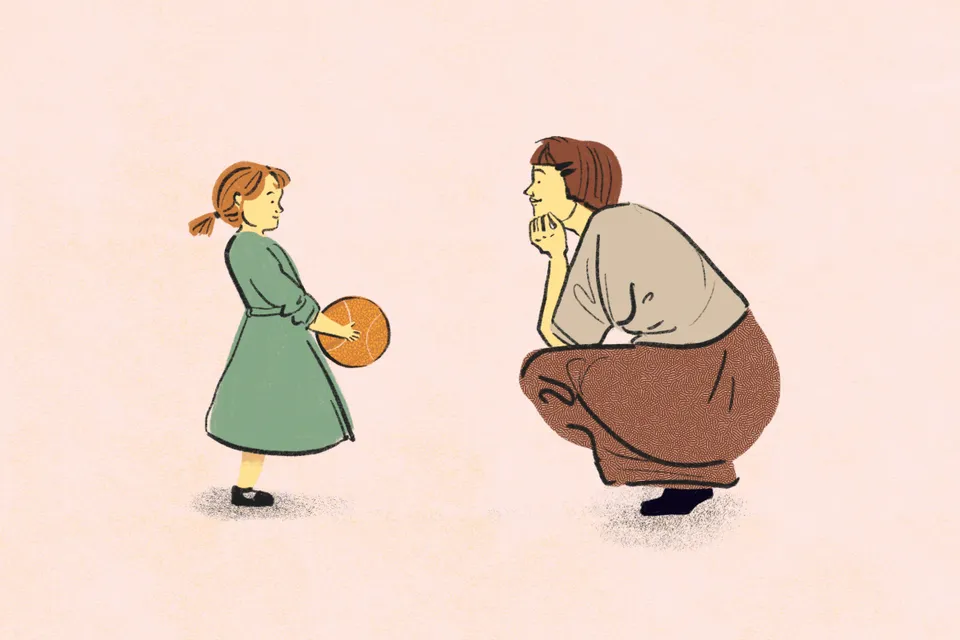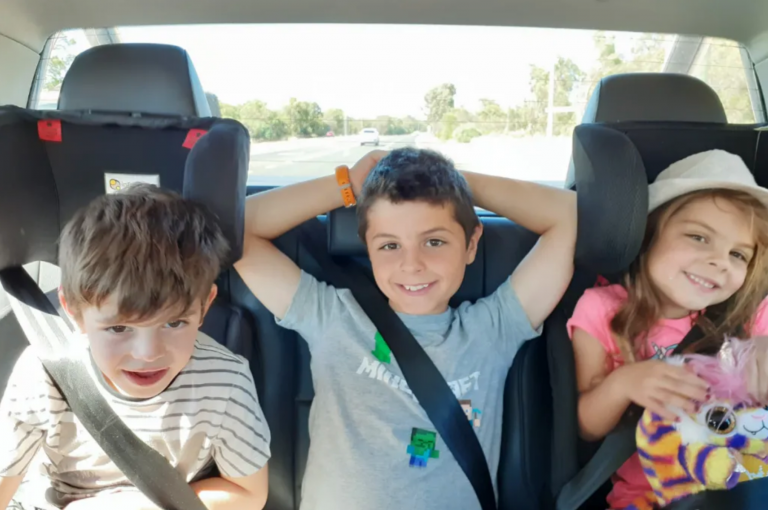Bringing a child into your family can take many forms – all equally special and exciting for prospective parents. If you’re thinking about bringing a child into your family or are curious about diverse family constructs, there’s a lot to consider. Let’s explore some alternative pathways to parenthood including adoption, fostering, donor conception, and surrogacy.
Adoption
What is adoption?
Adoption is the process of transferring the legal rights and responsibilities of a child from their birth or legal parents to the adoptive parents. There are several ways to adopt.
- Local or (private) domestic adoption – The child and adoptive parents are citizens of the same country and the adoption occurs within that country. Commonly, children are younger or infants and birth parent/s voluntarily decide on an adoption plan for their child.
- International or intercountry adoption – The child and adoptive parents are citizens of different countries. Children tend to be older, in sibling groups, or have additional needs. Parents will need to obtain local citizenship for their child.
- Intra-family adoption or kinship/family and friends care – When a child can no longer live with their birth family, they’re adopted or cared for within their biological family or social network. Care can be temporary or permanent. It’s generally thought that this type of care is best for a child’s sense of belonging and connection with their culture.
- Permanent care – When a child can no longer live with their birth family, a placement may be made under a legal order. Permanent care guardians are responsible for the day-to-day care responsibilities of a child and long-term decisions like education and where they live. Children usually have contact with their birth families. In some regions, this is known as permanent foster care. The care agreement usually ends when the child reaches adulthood.
- Adoption from foster care – While the primary aim of foster care is to reunite children with their birth family, many children in foster care/child welfare systems come to need a permanent placement outside of their birth family.
Considerations
- The adoption process can be complex and overwhelming, and laws differ by country/region. Gather as much information as you can before deciding to start the process. You can find information online, from agencies, lawyers, support groups, and adoption organizations.
- Depending on the legalities within your region, you can apply to begin the adoption process through a government department or through an accredited non-government organization/agency that facilitates the adoption process.
- Independent or private adoption is illegal in some countries/regions. This is where the process is initiated by prospective adoptive parents with help from a lawyer or adoption coordinator. It can be more challenging for prospective parents who will have to navigate complex regulations and procedures.
- Each country sets its own eligibility requirements for applicants and may impose limitations relating to health, age, relationship status, gender, other children, finances, religion, criminal and cultural background. You’ll need to meet the eligibility requirements that cover where you live and where the child is born or resides.
- Timeframes for adoption can vary greatly and the process can take several years.
- Adoption costs can vary greatly and you may need to prepare financially. In some cases, financial support may be available.
- Many of the children in need of adoption have additional physical, intellectual, or behavioral needs. Agencies and departments can help educate and prepare families for the challenges of bringing an adopted child into your family.
- Some countries require that families commit to ‘open adoption’ – where the biological and adoptive families share identifying information and have contact with each other. Open adoption is generally considered by behavioral experts to be more beneficial for an adopted child’s sense of identity and wellbeing.
- It’s important prospective parents prepare emotionally for adoption. Educate yourself on the needs of adopted children and coping mechanisms for challenging behavior. Establish a network of trusted family and friends, find an adoption support group, and speak to a counselor. Where you can, draw on the experience of adoptive parents who have gone before you to increase your understanding and build a more accurate picture of what your parenting role may look like.
- If there are other children in your family, prepare them for the adoption of a sibling by talking with them about what to expect (reading stories together about adoption can be a good starting point for conversations), giving them individual attention and being compassionate to their adjustment needs and behaviors.
- The Hague Adoption Convention has been ratified by 99 countries and “protects children and their families against the risks of illegal, irregular, premature or ill-prepared adoptions abroad….[It] seeks to ensure that intercountry adoptions are made in the best interests of the child and with respect for his or her fundamental rights. It also seeks to prevent the abduction, the sale of, or traffic in children”.
Foster care
What is foster care?
Foster care is a temporary arrangement to place a child who’s unable to live with their own family in a safe, secure, and nurturing family environment. Children are cared for by the foster parent/s while birth or legal parent/s get help to make positive changes in their life. The general aim of foster care is to reunite children with their birth parents.
Foster care can be:
- Emergency care – A child is placed in foster care for a few nights or weeks. This is usually unplanned and you could get less than 24 hours’ notice.
- Respite/short break – A once-off placement or regular agreement.
- Short-term foster care – Anywhere from a one-night to two-year placement.
- Long-term or permanent care – See ‘Permanent care’ above.
- Medical/therapeutic – Care is provided to children with complex medical or behavioral needs by experienced foster parents.
- Intra-family adoption or kinship/family and friends care – See above. In some cases, this form of care can lead to the adoption of the child.
Considerations
- Gather as much information as you can to determine if becoming a foster parent is right for your family.
- Depending on the legalities in your country, you can apply to become a licensed/certified foster parent through a government department or through an accredited non-government organization that facilitates the process. If there are multiple agencies in your region, you may consider contacting several agencies to select the one that best fits your needs.
- Each country sets its own eligibility requirements for applicants and may impose limitations relating to health, age, relationship status, gender, other children, finances, religion, criminal and cultural background.
- Where possible, foster parents are in contact with the child’s birth or legal parents.
- Foster parents generally share decision-making and planning for the child’s care with the child’s biological family.
- The majority of children needing foster care are in sibling groups, vulnerable children, older children, and children with disabilities or additional physical, intellectual, or behavioral needs. Agencies and departments can help educate and prepare families for the challenges of bringing a foster child into your family.
- Timeframes for becoming a certified foster parent from application to certification can vary between countries, and can take anywhere from two to nine months.
- Application costs for becoming a foster parent can vary greatly. In some countries there are almost no out-of-pocket expenses, while in others, costs can run into the thousands, therefore you should consider preparing financially. In some cases, financial support may be available.
- When a match is found, the child’s profile will be sent to you before they are placed in your home.
- If a family is looking to adopt a child they’ve been fostering, some agencies offer dual-licensing, but families may have to reapply to adopt the child.
- Foster parents receive ongoing government or agency placement support and training.
Donor conception
What is donor conception?
Donor conception is the process of having a baby using donated eggs, sperm, or embryos. Conception can be achieved through fertility treatment like in vitro fertilization (IVF), or self-insemination by a recipient parent. Donor conception is commonly used as a family planning option for people who identify as LGBT+, who may not be producing their own eggs or sperm, whose eggs or sperm are unlikely to result in a pregnancy, or who have a high risk of passing on an inherited disease. Donor conception can also involve surrogacy (see below).
Considerations
- Gather as much information as you can before deciding if donor conception is right for your family. Consult your GP, gynecologist, or fertility specialist, and speak to your family members.
- Everyone’s experience will be different and success rates will vary. Those receiving treatment will need to undergo a health and fertility assessment. As with all forms of reproductive health, a healthy lifestyle is encouraged before and throughout treatment.
- Depending on your country, you may be able to source the donation locally or from another country. Donors can be found with the help of your fertility clinic, through advertisements, or your network of family and friends.
- The legal rights and responsibilities of donors and recipients differ by region and country (e.g. some countries do not allow anonymous donation or donation in exchange for payment).
- Depending on where you live, you may have the right to request both identifying and non-identifying information about your child’s donor and non-identifying information about your child’s donor siblings.
- In many countries, it’s generally advised that parents of donor-conceived children should be prepared to support and be guided by their child’s curiosity about their donor family as they grow up. Accidental disclosure can be harmful to the family.
- Your fertility clinic will facilitate counseling sessions to talk through a range of considerations about the physical, social and emotional aspects of donor conception. Topics might include ongoing relationships, the role of (and title you’ll give) the donor, withdrawal of consent, what will happen in the event of death, navigating conversations with children and others, and handling impact on non-biological parents such as their connection with the child, breastfeeding grief, or feelings of exclusion. If you’re independently pursuing donor conception (e.g. in a co-parenting arrangement), you might consider arranging one-on-one and group counseling for you, your family, and your donor.
- Fertility preservation is the process of freezing eggs, embryos, sperm, or reproductive tissue that can be used to have a child in the future. A person may opt to freeze for medical reasons like cancer treatment, to extend childbearing years, or they are a transgender person who may want to have children post-transition. Each country sets its own eligibility requirements for applicants seeking fertility preservation and may impose limitations.
A note on co-parenting arrangements
- Some families who seek to have children through donor conception, choose to enter into a co-parenting arrangement. Co-parenting arrangements often involve members of the LGBT+ community where shared parentage across families or individuals is desired.
- Legal parentage of donor-conceived children in co-parenting arrangements can be inconsistent, so it’s important to understand the law as it affects you based on your individual circumstances.
- A positive ongoing relationship between the donor, recipient/s, and their families is essential in a co-parenting arrangement. It may help to work with a counselor individually and as a group, consult a family lawyer, and establish a written agreement of expectations and intentions before undertaking a co-parenting arrangement.
Surrogacy or gestational carriers
What is surrogacy?
Surrogacy is a method of assisted reproduction where an egg is fertilized through natural or artificial insemination, and the surrogate carries the baby and gives birth. The baby is carried for the intended parent/s who will become the child’s parent/s after birth. Surrogacy can include:
- Traditional, partial, natural, or straight surrogacy – The surrogate’s egg is fertilized in vitro by the intended parent’s or a donor’s sperm.
- Gestational, host, or full surrogacy – An embryo that is created by IVF technology is implanted in a surrogate. The embryo is created using eggs and sperm from the intended parent/s or donor/s. The child is not biologically related to the surrogate/gestational carrier.
Considerations
- The legislative and regulatory frameworks surrounding surrogacy and gestational carries differ significantly by region and country, and in some cases are non-existent, illegal or legal but not supported. Educate yourself on the legal rights and responsibilities in your region and the region where your potential surrogate resides, and gather as much information as you can about the risks and benefits before you begin. You can find information online, from agencies, lawyers, and support groups.
- Depending on the legalities within your region, you can apply to begin the surrogacy process through an accredited agency, or independently with the help of a surrogacy or family/reproductive lawyer. Seeking independent surrogacy is illegal in some countries. Also, lawyers may not provide other important services found with a surrogacy agency.
- Intended parents will need to undergo legal proceedings to establish themselves as the legal parents. Some regions allow for a declaration of legal parentage prior to the child’s birth, while in others you would need to adopt or formally transfer parentage of the child after birth. You will also need to comply with immigration and citizenship regulations in both the country you reside in and the child’s country of birth. You should be fully educated about what these are before entering into a surrogacy agreement, as in some regions you may encounter difficulty obtaining, or be refused, legal parentage.
- If not available through your surrogacy agency, you may consider specialized counseling to prepare you for the emotional and social impacts of surrogacy.
A note on commercial surrogacy
Commercial surrogacy is a surrogacy arrangement where the surrogate is compensated for their services in addition to their medical or out-of-pocket expenses. It’s illegal in some regions and countries and there are many safety and ethicality issues you’ll need to consider in addition to those listed above:
- Are the agency’s processes and medical standards safe and ethical?
- Why are the surrogates and donors involved and are there safeguards in place to protect them?
- Does surrogate screening include emotional and psychological suitability as well as health and medical?
- Can you choose the level of contact you and your child have with the surrogate? An open relationship between intended parent/s and surrogate families – where both families share identifying information and have contact with each other – is generally considered by behavioral experts to be more beneficial for the child’s sense of identity and wellbeing. Open relationships are not mandatory in all regions or countries.
- Costs can vary greatly and you may need to prepare financially. Will you have the financial resources to continue the journey in the event of miscarriage? Do you need a medical insurance plan? Do you have the financial resources to cover medical and travel expenses?
The term LGBT+ refers to people who identify as lesbian, gay, bi-sexual, transgender, intersexual, questioning/queer, asexual and other gender non-conforming identities.
The legalities of adoption differ by region and/or country. Seek independent legal advice.
Sources:
Adopt Change; Adoption Council of Canada; Adoptions Together; AdoptUSKids; Brilliant Beginnings; Canadian Fertility and Andrology Society; CARA; Caring Families Aotearoa; Citizens Information Ireland; Foster Care Newsletter; Fostering Connections; GOV.UK; GOVT.NZ; HFEA; Intercountry Adoption Australia; Ministry for Children (NZ); Ministry of Social and Family Development (Singapore); Ministry of Women and Child Development (India); New Zealand Law Commission; NFPA; Ontario Association of Children’s Aid Societies; Resolve; Singapore Legal Advice; The Adoption Authority of Ireland; US Department of State; VARTA


